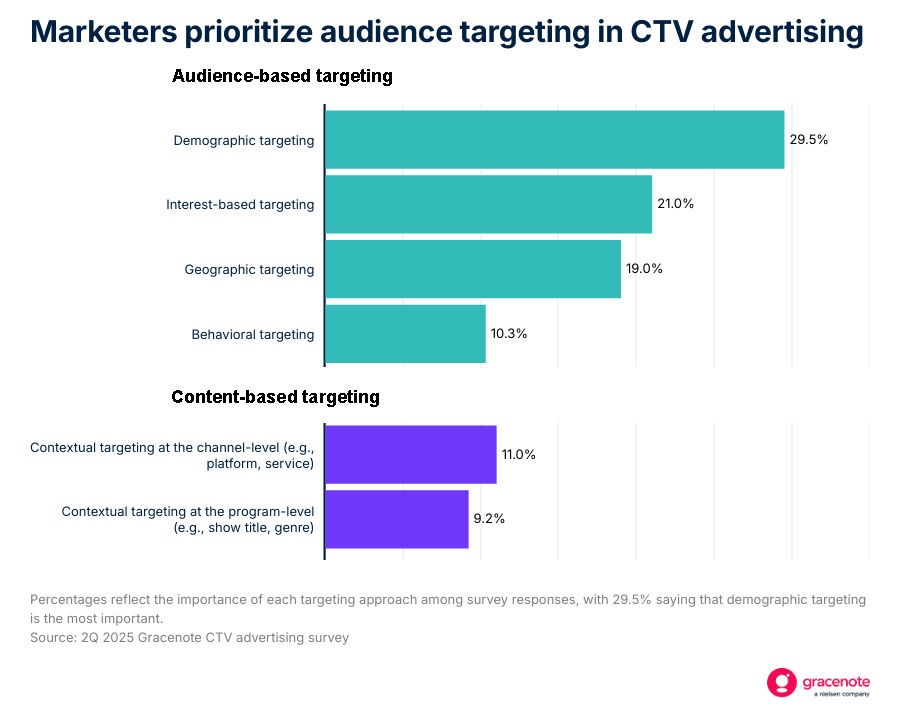At its onset, the connected television (CTV) was believed to hold the power of audience-level ad targeting on the biggest screen in the house. While a feasible premise, the last 10 years have demonstrated that CTV isn’t simply a larger version of the digital channels that came before it. That’s because people don’t watch TV ads the same way that they watch ads on social media.
Brands and agencies know this, as data from a recent Gracenote survey of brand and agency executives with influence over media planning and buying decisions highlights how brand awareness is their top objective with respect to their CTV spending.

Through the lens of their top objectives, it’s clear that marketers want to use CTV for more than just lower-funnel marketing. The downside here is that they haven’t adapted their strategies to reach the broader audiences they’re looking to engage. This is likely because contextual targeting in CTV has historically been difficult to execute because of a lack of standardized industry data. In fact, 80% of the marketers surveyed in Gracenote’s recent CTV advertising survey prioritize audience-based targeting in their paid CTV activations.

Additionally, and in step with the IAB’s forecast for a 12% increase in CTV spending this year, marketers continue to increase their spending across CTV. In fact, nearly one-in-three allocate 40% or more of their paid media budgets to CTV. Lack of insight into whether their ads reach their intended audiences, however, remains a top challenge, suggesting that the increased investment isn’t translating into tangible ROI.

Given marketers’ focus on audience targeting, it’s not surprising that four of the top challenges they face in CTV advertising pertain to content transparency. By tapping into the visibility that contextual signals provide, advertisers and agencies can overcome some of their top challenges and find the scale they’re looking for. Education and awareness are critical here, as familiarity among marketers is relatively low.

Moderate awareness about contextual targeting aside, marketers overwhelmingly understand the importance of standardized and unified content metadata, which can provide programmatic systems with critical information for buying and selling decisions. They also see the value of standardized and unified metadata in their ad planning, as more than half of respondents in Gracenote’s recent survey say standardized and uniform content metadata would justify more CTV advertising dollars.

Despite the addressable nature of CTV, approaching this channel with overly user-focused approaches tends to exclude anyone who isn’t already in the funnel. That inhibits future growth and long-term business vitality. Marketers are looking to CTV for brand building, but to capitalize, they’ll need to embrace the reality that what people are watching is just as important as who’s watching.
With this mindset, contextual-based parameters have a role to play in brand building across CTV. And if advertisers start to leverage contextual signals in their CTV campaigns, they’re likely to find that the scale they’ve been looking for has been there all along.
For additional insights, download our 2025 contextual targeting report.
How brands can tap into the growth of live sports on FAST channels
The ongoing addition of live sports to FAST channels is a notable opportunity for brands because of their real-time appeal with sports fans.
2025 Gracenote contextual targeting report
User-based targeting is great for delivering performance, but people don’t watch TV ads the way they watch ads on social media.
Content metadata provides critical context as CTV advertising goes programmatic
The granularity of program information is becoming increasingly important across CTV channels as advertising goes programmatic.
